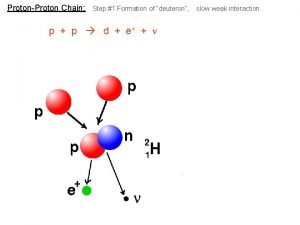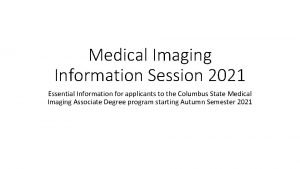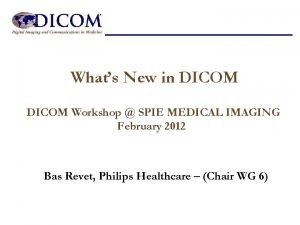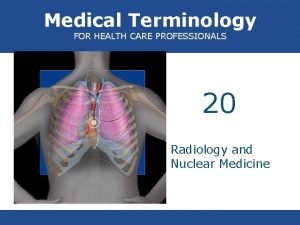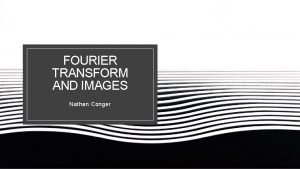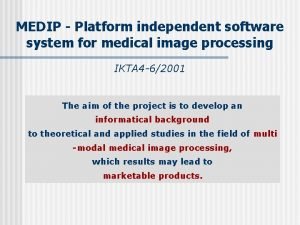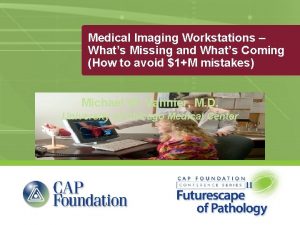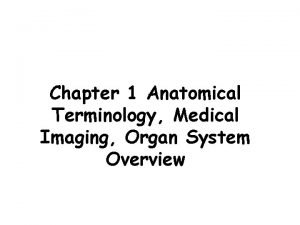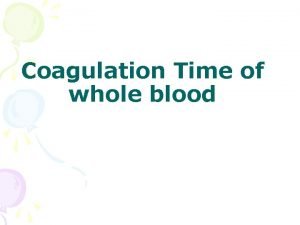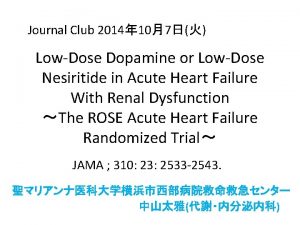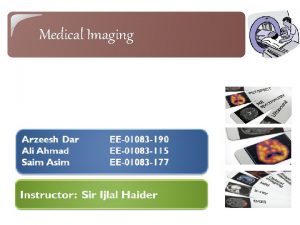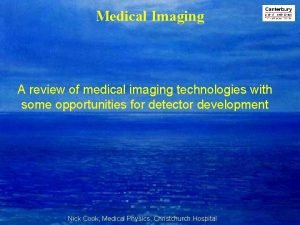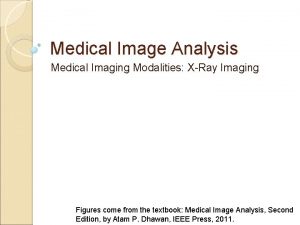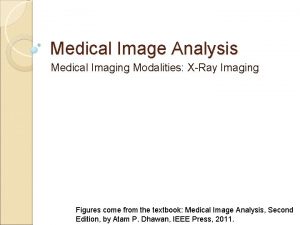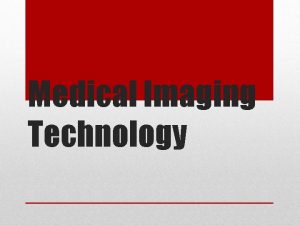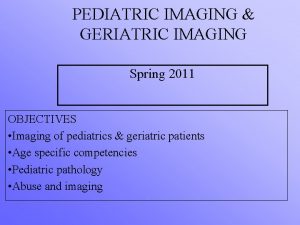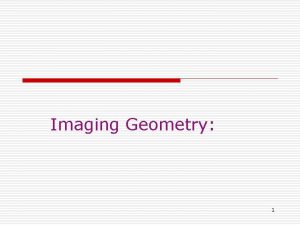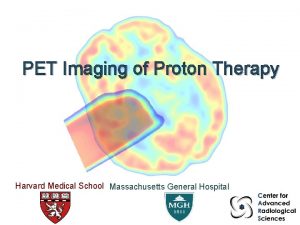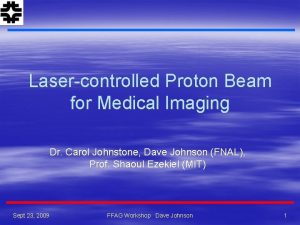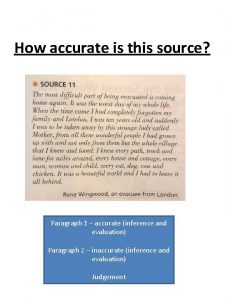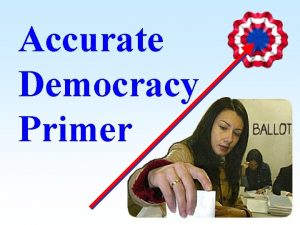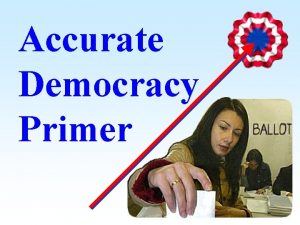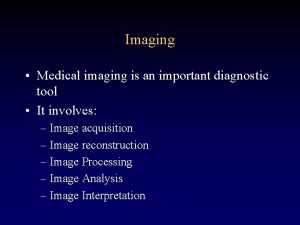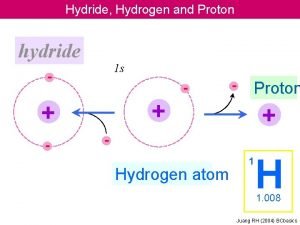A Lowdose Accurate Medical Imaging Method for Proton





























- Slides: 29

A Low-dose, Accurate Medical Imaging Method for Proton Therapy: Proton Computed Tomography • Bela Erdelyi • Department of Physics, Northern Illinois University, • and Physics Division, Argonne National Laboratory • FFAG’ 09, Fermilab, Batavia, September 21 -25, 2009

Acknowledgments • Northern Illinois University – Physics: G. Coutrakon, V. Rykalin, K. Wong – Computer Science: N. Karonis, K. Duffin, K. Naglich, J. Panici • Loma Linda University Medical Center – R. Schulte, V. Bashkirov , F. Hurley, S. Penfold • Santa Cruz Institute for Particle Physics – H. Sadrozinski, M. Petterson , N. Blumenkrantz , B. Colby, J. Feldt, J. Heimann, R. Johnson, D. Lucia, D. C. Williams September 21 -25, 2009 Proton Computed Tomography 2

Outline • • • The main idea A little history The fundamentals Current status Summary September 21 -25, 2009 Proton Computed Tomography 3

The Main Idea • For proton therapy, one positions the Bragg peak onto the tumor • For p. CT, raise the initial energy so protons traverse the object to be imaged • Measure the phase space data of each proton individually • Use this data to construct the electron density map of the object traversed by protons • Use the resulting electron density map for diagnosis, proton therapy treatment plan, adaptive treatment, positioning verification, etc. September 21 -25, 2009 Proton Computed Tomography 4

Motivation: Range Uncertainties September 21 -25, 2009 Proton Computed Tomography 5

Overview September 21 -25, 2009 Proton Computed Tomography 6

Advantages and Benefits • Practicallyeliminates range uncertainties, therefore allowing very accurate and precise proton treatment plans • Providesfast patient positioning verification and adaptive treatments, if necessary • Achieves areduced dose necessary for imaging relative to XCT • Provides aquantification of the range uncertainties as a function of tumor site, type, etc. that will beuseful to any proton therapy facility in operation that lacks p. CT a system. September 21 -25, 2009 Proton Computed Tomography 7

History of p. CT (1) September 21 -25, 2009 Proton Computed Tomography 8

History of p. CT (2) • In the late 1970 s, Ken Hanson (LANL) and Kramer et al. (ANL) experimentally explored the advantages of p. CT and proton radiography • They pointed out the dose reduction w. r. t. XCT and the problem of limited spatial resolution due to proton scattering • In the 1990 s Ron Martin (ANL) proposed building a proton CT system using a scanning beam proton gantry • During the 1990 s. Uwe Schneider (PSI) further developed the idea of proton radiography as a tool for quality control in proton therapy • In the late 1990 s. Piotr. Zygmanski(MGH) Harvard Cyclotron tested a cone beam CT system with protons • p. CT Collaboration (2003 - ) September 21 -25, 2009 Proton Computed Tomography 9

The Fundamentals (1) September 21 -25, 2009 Proton Computed Tomography 10

The Fundamentals (2) Determined by proton paths Not known exactly due to MCS Electron densities Determined by average proton energy loss over paths From measurements Not known exactly due to energy loss straggling Random realization with ξ drawn from a probability distribution September 21 -25, 2009 Proton Computed Tomography 11

The Most Likely Path Deterministic systems known Transfer map computed fixed September 21 -25, 2009 Proton Computed Tomography 12

The Most Likely Path Stochastic systems known Transfer map known computed September 21 -25, 2009 Proton Computed Tomography 13

Spatial Resolution (1) A measure of our ability to predict each individual proton’s trajectory inside the object to be imaged is the spatial resolution Multiple Coulomb Scattering (MCS) Example: 200 Me. V protons in 20 cm of water have σ=39 mrad -> σlat=3. 5 mm Use constrains to reduce uncertainty: position, direction, energy September 21 -25, 2009 Proton Computed Tomography 14

Spatial Resolution (2) • • • Developed new formalism to include energy as a constraint Equivalently, it fixes the trajectory length Example: 2 protons, with exactly the same incoming energy, position, direction, and outgoing position and direction – but different outgoing energy Previous MLP formalism gives the same MLP, new one is different due t the different path lengths Also implies improved spatial resolution – difficult to compute analytically September 21 -25, 2009 Proton Computed Tomography 15

Electron Density Resolution (1) A measure of our ability to predict from the random vector the electron density resolution is Definition: September 21 -25, 2009 Proton Computed Tomography 16

Electron Density Resolution (2) September 21 -25, 2009 Proton Computed Tomography 17

Reconstruction Methods Projection Methods Basic property: To reach any goal that is related to the whole family of sets by performing projections onto the individual sets. Basic ability: To handle huge-size problems whose dimensions are beyond the capabilities of current, more sophisticated, methods. September 21 -25, 2009 Proton Computed Tomography 18

Algebraic Reconstruction Technique H 4 H 5 H 3 H 2 H 1 September 21 -25, 2009 Proton Computed Tomography 19

Block Iterative Projection H 6 H 5 H 4 H 3 H 2 H 1 September 21 -25, 2009 Proton Computed Tomography 20

String Averaging H 6 H 5 H 4 H 3 H 2 H 1 September 21 -25, 2009 Proton Computed Tomography 21

Hardware Implementation • • • Desktop/laptop Compute Clusters GP-GPU clusters Hybrid: multi-core CPUs + GPGPUs (clusters) Speedup of the rel. electron density calculation when performed with a NVIDIA GTX 280 GPU relative to a Intel Q 6600 quad core CPU (Scott Mc. Allister, Master’s Thesis, Cal State SB, 2009) September 21 -25, 2009 Proton Computed Tomography 22

GEANT 4 Simulations September 21 -25, 2009 Proton Computed Tomography 23

Reconstruction Results From Simulations 1 cycle 5 cycles 10 cycles BICAV September 21 -25, 2009 DROP OS-SART Proton Computed Tomography CARP 24

Reconstruction Results From Real Data p. CT prototype p. CT phantom September 21 -25, 2009 Proton Computed Tomography 25

The p. CT System Prototype Schematic Ready by early 2010 September 21 -25, 2009 Proton Computed Tomography 26

System Components September 21 -25, 2009 Proton Computed Tomography 27

Next Phase September 21 -25, 2009 Proton Computed Tomography 28

Summary • p. CT is a new medicalimagingmethodthat willgreatly benefitprotontherapyin generaland will offer a lowdose diagnostic imaging modality • The projectis truly interdisciplinary involvingphysics, mathematics, computer science and engineering • The NIU-LLUMC-SCIPP Collaborationis wellunderway; the first p. CT prototype system capable of imaging head-sized objects will be ready by early 2010 • Further work is necessary towards a fully clinical operation-readyp. CT system September 21 -25, 2009 Proton Computed Tomography 29
 Frc control system
Frc control system Proton proton chain
Proton proton chain Proton proton chain
Proton proton chain Proton proton chain
Proton proton chain Ohiohealth berger hospital mammography circleville
Ohiohealth berger hospital mammography circleville Spie medical imaging
Spie medical imaging Mammogram medical terminology
Mammogram medical terminology Fourier transform in image processing
Fourier transform in image processing Medical imaging software
Medical imaging software Medical imaging workstations
Medical imaging workstations Manus region
Manus region Clotting time slide method principle
Clotting time slide method principle Method method method
Method method method Fspos vägledning för kontinuitetshantering
Fspos vägledning för kontinuitetshantering Typiska novell drag
Typiska novell drag Tack för att ni lyssnade bild
Tack för att ni lyssnade bild Vad står k.r.å.k.a.n för
Vad står k.r.å.k.a.n för Shingelfrisyren
Shingelfrisyren En lathund för arbete med kontinuitetshantering
En lathund för arbete med kontinuitetshantering Adressändring ideell förening
Adressändring ideell förening Tidbok för yrkesförare
Tidbok för yrkesförare Sura för anatom
Sura för anatom Förklara densitet för barn
Förklara densitet för barn Datorkunskap för nybörjare
Datorkunskap för nybörjare Tack för att ni lyssnade bild
Tack för att ni lyssnade bild Debattartikel struktur
Debattartikel struktur För och nackdelar med firo
För och nackdelar med firo Nyckelkompetenser för livslångt lärande
Nyckelkompetenser för livslångt lärande Påbyggnader för flakfordon
Påbyggnader för flakfordon Lufttryck formel
Lufttryck formel


